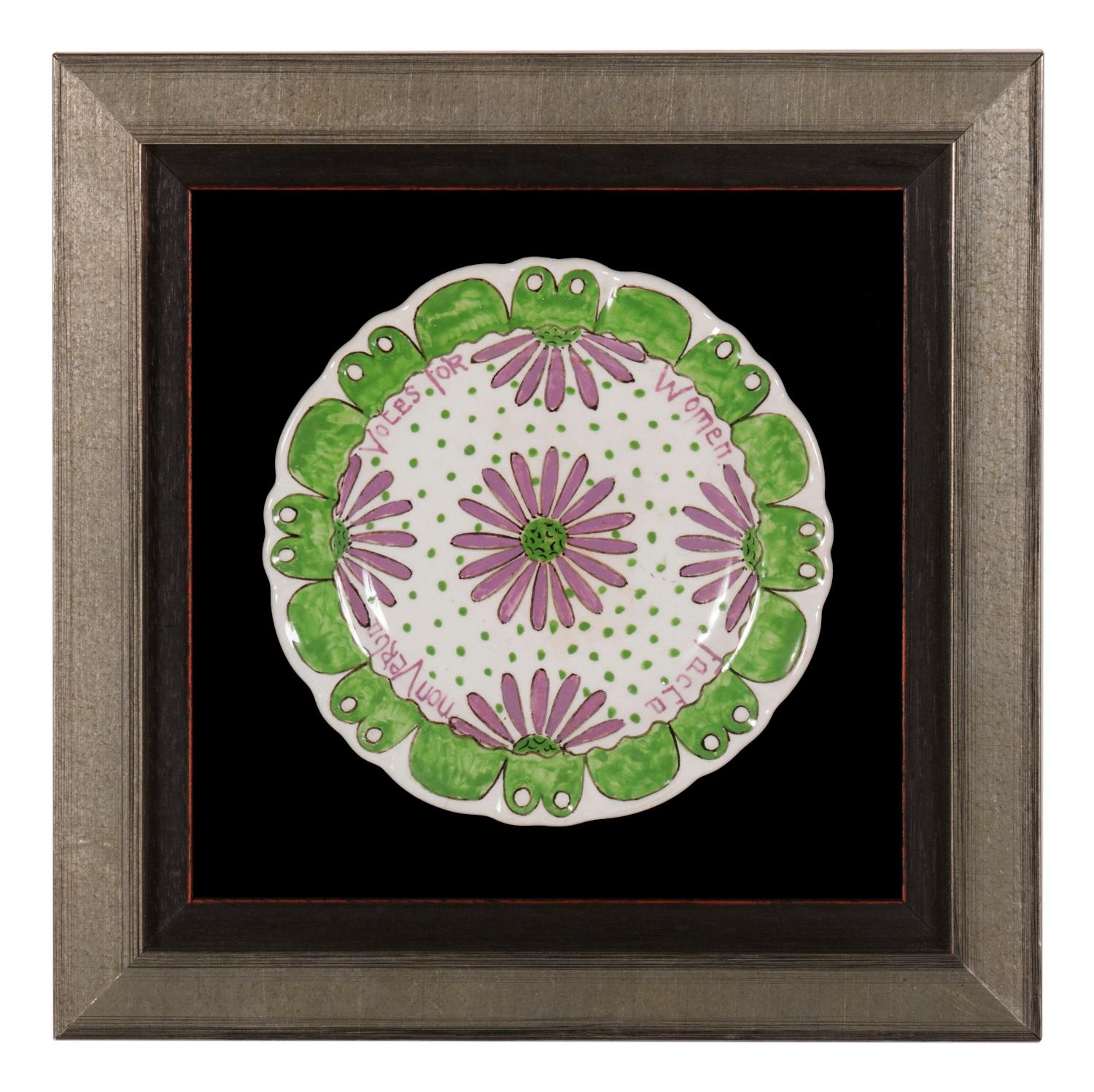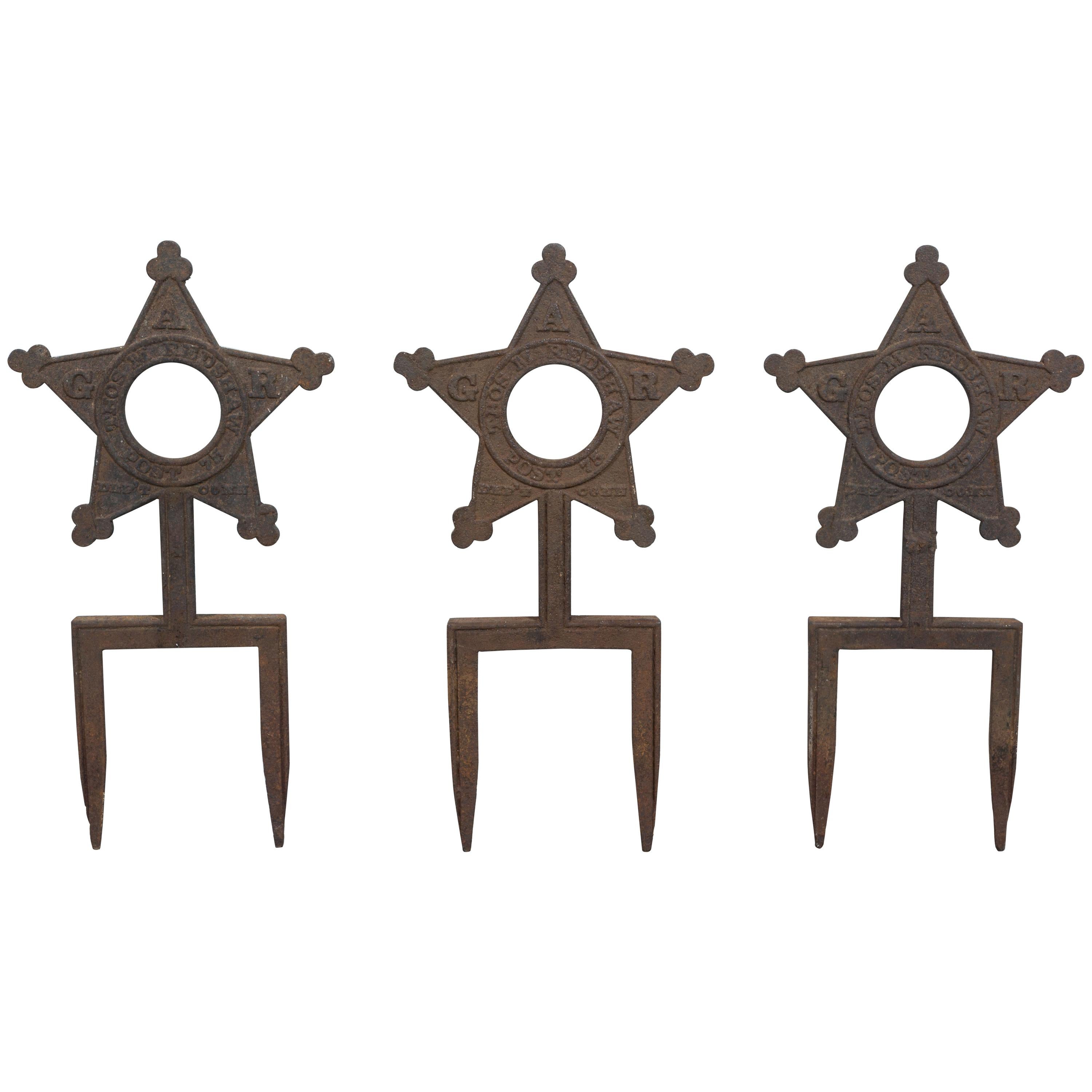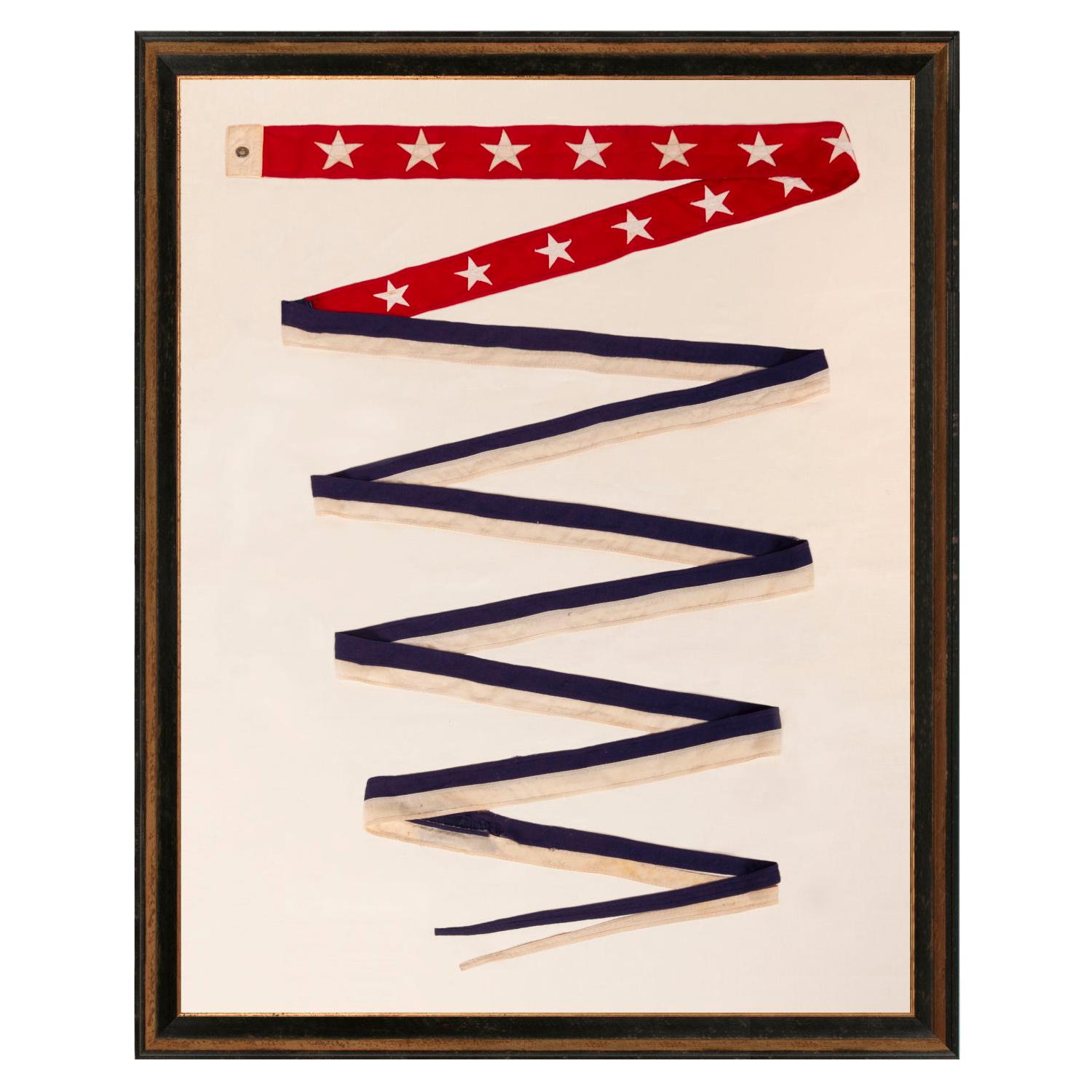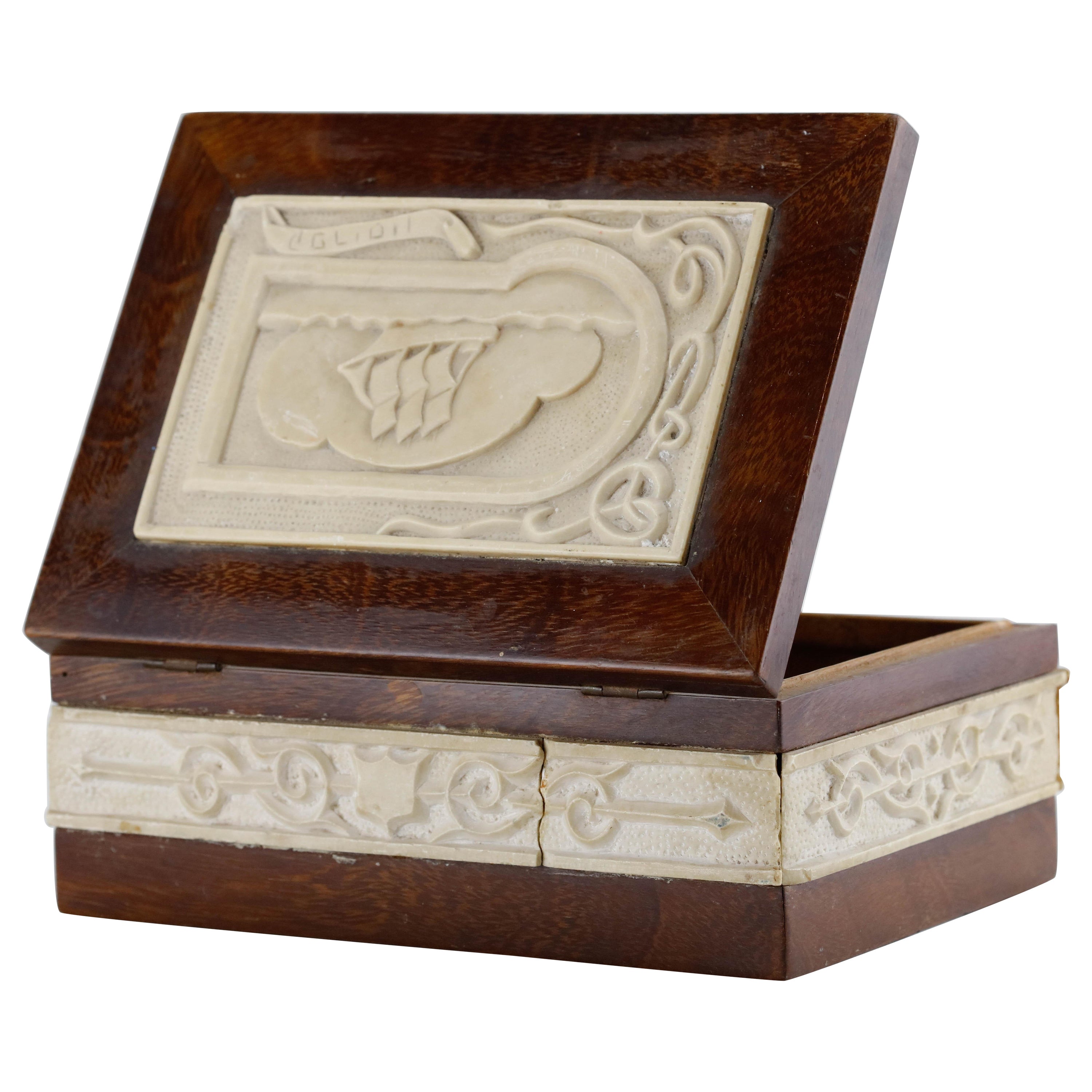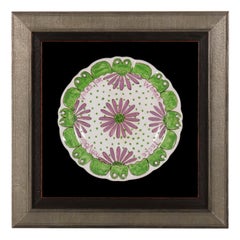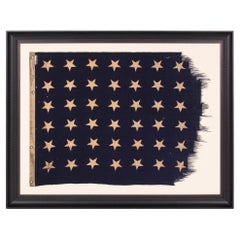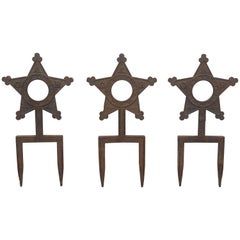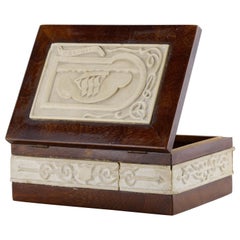
Thirteen-Star U.S. Military Camp Colors, One of Three Known Examples
View Similar Items
Want more images or videos?
Request additional images or videos from the seller
1 of 5
Thirteen-Star U.S. Military Camp Colors, One of Three Known Examples
About the Item
- Dimensions:Height: 30 in (76.2 cm)Width: 33 in (83.82 cm)Depth: 2.5 in (6.35 cm)
- Period:
- Date of Manufacture:1861-1876
- Condition:Wear consistent with age and use. See Item Description.
- Seller Location:York County, PA
- Reference Number:Seller: 13j-12571stDibs: LU84971349842
About the Seller
5.0
Recognized Seller
These prestigious sellers are industry leaders and represent the highest echelon for item quality and design.
Established in 1991
1stDibs seller since 2008
61 sales on 1stDibs
Typical response time: 10 hours
More From This SellerView All
- Suffragette Plate, "Deeds Not Words" & "Votes for Women", The Only Known ExampleLocated in York County, PAENGLISH PORCELAIN SUFFRAGETTE PLATE WITH "DEEDS, NOT WORDS" AND "VOTES FOR WOMEN" SLOGANS, ONE-OF-A-KIND AMONG KNOWN EXAMPLES, CA 1905-1918 English porcelain plate, made for the Wo...Category
Early 20th Century English Political and Patriotic Memorabilia
MaterialsPorcelain
- 48 Star U.S Navy Jack Flown on the USS FT. Mandan, ca 1945Located in York County, PA48 STAR U.S. NAVY JACK, MARKED AS HAVING BEEN FLOWN ON THE U.S.S. FT. MANDAN, LAUNCHED NEAR THE END OF WWII, IN 1945, WITH SERVICE DURING BOTH THE KOREAN AND VIETNAM WAR ERAS, IN THE...Category
Vintage 1940s American Political and Patriotic Memorabilia
MaterialsWool
Price Upon Request - "Visit to Camp" Rare Card Game by McLaughlin Brother of New York, Ca 1871Located in York County, PA“Visit To Camp,” an extraordinarily rare card game by mclaughlin brothers of new york, circa 1871. This extremely rare card game, designed with Civil War context, was made by McLoughlin Brothers in New York City. The set includes 12 (complete) chromolithographed, character playing cards, and 68 (out of 72) object cards, with various accoutrements. All of the above are housed in a wooden storage box with a slide lid and a chromolithographed, paper label. Played in an ad-lib, story-telling format, the characters include the Colonel, the Captain, the Zouave soldier with red pantaloons, the Rifleman, the Artilleryman, the Riding Master, the Musician, the Ferrier, the Surgeon, the Sapper (engineer), the Sutler (cook), and the Vi Vandeer (a woman who takes care of the troops). Each character was originally linked to 6 objects, which were to be produced by players on demand during a spoken reading of the game’s convoluted story-line. There are actually 69 cards included here, one of which is an object card for “the Chinaman.” Since the card matches the style exactly in printing, shape, and scale, and since there was no Chinaman in this game, I presume that the card must have once accompanied another McLaughlin ad-lib deck. The instructions (reproduced, in scale) list 13 possible players, with the 13th acting as narrator. I could locate only 3 other copies of this extremely rare game, all of which included 12 cards. McLoughlin Brothers is said to have pioneered the systematic use of color printing technologies in children’s books. The publishing firm opened in 1820 and was active until 1920, when it was sold to Milton Bradley. During the early years, the product line included toys in addition to books, among which were games, blocks, and paper dolls. Artwork from famous illustrators such as Thomas Nast, William Momberger, Ida Waugh” (Laura Wasowicz), Justin Howard, and Palmer Cox...Category
Antique 1870s American Political and Patriotic Memorabilia
MaterialsPaper
- U.S War Department Commissioning Pennant with 13 StarsLocated in York County, PAEXTREMELY RARE U.S. WAR DEPARTMENT COMMISSIONING PENNANT WITH 13 STARS, A REVERSAL OF THE U.S. NAVY COLOR SCHEME, TWENTY-FOUR FEET ON THE FLY, SP...Category
20th Century American Political and Patriotic Memorabilia
MaterialsWool
Price Upon Request - 36 Star Antique Flag, Nevada Statehood, with Stars in the "Great Star" PatternLocated in York County, PA36 STARS IN THE "GREAT STAR" OR "GREAT LUMINARY" PATTERN, ON A MERINO WOOL FLAG OF THE CIVIL WAR ERA WITH BEAUTIFUL SCARLET AND ROYAL BLUE COLOR AND WITH ITS CANTON RESTING ON THE "WAR STRIPE," REFLECTS NEVADA STATEHOOD, 1864-67 36 star antique American flag of the Civil War era, with some rare, desirable, and beautiful features. The most obvious of these is the configuration of the stars. These are arranged in what is known as the “Great Star” or "Great Luminary" pattern, a star made out of stars, which is one of the most graphic and desired geometric designs among flag enthusiasts. Nevada entered the Union as the 36th state on October 31st, Halloween, in 1864. Ushered in by Abraham Lincoln just eight days before the presidential election that resulted in his second term, the territory’s wealth in silver was attractive to a nation struggling with the debts of war and so increased support for the Republican ticket. The 36th star was officially added on July 4th, 1865, but since the flag makers generally cared very little about official star counts, the production of 36 star flags began much earlier. The makers of printed flags are known to have begun adding the 36th star as early as July of 1864, several months before the addition of Nevada actually occurred. This was a common practice during the late 19th century and is reflective of both the nation's desire for Westward Expansion and the hope of flag-makers to bring new star counts to market before their competitors. The 36 star flag was officially replaced by the 37 star flag in 1867, following the addition of Nebraska. Great Stars come in many forms. This particular example has a single center star, surrounded by a pentagon of 5 stars, set inside its star-shaped perimeter. Note how the Great Star is positioned with two points up instead of one and so is effectively upside-down with respect to modern convention. Unlike the current flag, versions of the Stars & Stripes made during the 19th century and prior often displayed stars that were varied or completely random in their rotation on a vertical axis. Note how the feature draws attention and is unusual to the eye, in addition to being visually appealing. Another interesting trait can be seen in the fact that the canton rests on a red stripe. When this scarce condition occurs, some flag historians have referred to it as the “blood stripe” or the “war stripe”, suggesting the flag was constructed in this manner when the nation was at war. In actuality, the placement probably occurred more often by accident. Not everyone knew where the canton was traditionally positioned, and because there was no official specification until 1912, there was no official placement. Whatever the case may be with regarding the reason, the war stripe feature is highly coveted by collectors. The stars of the flag are hand-sewn, made of cotton, and are double-appliquéd (applied to both sides). The canton and stripes of the flag are made of fine merino wool. These are beautiful, luxurious fabrics with strong royal blue and scarlet color. Every seam was joined with a row of hand-stitching, then finished with a row of treadle stitching. Instead of employing the selvage edge of the red fabric, the top and bottom edges of the flag were turned under and seamed by hand and the fly end was seamed in the same fashion. There is a narrow binding along the hoist, treadle-sewn and made of cotton. Along this five cotton tabs were affixed, each with a tiny brass ring, which suggests that the flag was probably affixed to a wooden staff with twine or ribbon and hand-carried. The name of "Stow" is inscribed along the hoist. This would be the name of a former owner. In the field of early American flags...Category
Antique 1860s American Political and Patriotic Memorabilia
MaterialsWool
- 33 Star Flag with Stars in a "Great Star" Pattern, Oregon State, ca 1859-1861Located in York County, PA33 STARS IN A "GREAT STAR" PATTER ON A BRILLIANT, ROYAL BLUE CANTON, A RARE AND EXTRAORDINARY EXAMPLE, PRE-CIVIL WAR THROUGH THE WAR'S OPENING YEAR, 1859-1861, OREGON STATEHOOD 33 s...Category
Antique Mid-19th Century American Political and Patriotic Memorabilia
MaterialsSilk
You May Also Like
- Collection of Three Cast Iron Star Victorian Daughters of the Revolution MarkersLocated in Santa Monica, CACollection of three Daughters of the Revolution cast iron star markers. Marked GAR Thos Feushaw Post 75 Conn.Category
Antique 1890s North American Folk Art Garden Ornaments
MaterialsIron
- Wooden Box Inlaid with Stone Tiles from Cyprus Internment CampsLocated in New York, NYWood and stone box from the internment camps in Cyprus, Circa 1946 Oblong wooden box. On the lid is a stone plaque decorated with an image of a ship at sea, surrounded by a frame and ornaments. One of the ornaments bears the engraved Hebrew inscription "Kafrisin" ["Cyprus"]. The sides of the box are decorated with chiseled stone...Category
Vintage 1940s Decorative Boxes
MaterialsStone
- 46-Star American Flag Printed in Drum Star ConfigurationLocated in Colorado Springs, COThis is an original 46-Star American parade flag, celebrating Oklahoma statehood. Each star on the flag's canton represents a state in the Union at the time. The official flag design would update every July 4th, to include any new states added to the Union in the past year. Oklahoma, the 46th state, entered the Union on November 16, 1907. As such, this 46–star flag was the official flag of the United States from July 4, 1908, until July 4, 1912. The silk flag has a dark blue canton with 46 white printed stars. The stars are printed in an 7-8-8-8-8-7 row configuration, or “Drum design.” The flag design is completed with 13 alternating red and white stripes, each stripe representing one of the original thirteen colonies. The land that comprises Oklahoma today was added to the United States as part of the Louisiana Purchase of 1803. Throughout the 19th century, the U.S. government relocated Indian tribes from the southeastern United States to the area, and by 1900, over 30 Indian tribes had been moved to what was originally called the Indian Territories. At the same time, ranchers in Texas began to move into the area in search of new pasture lands. Although stipulations in the Indian Relocation Act agreed that the land would forever be Indian Territory, the promise of fertile farmland trumped the government’s promise of sovereignty. On April 22, 1889, they opened the land to settlement by homesteaders, creating a land run in which settlers, called “Boomers,” were allowed to cross the Texas or Arkansas border at a particular hour to claim homesteads. Settlers who illegally crossed the border earlier to stake prime land were called “sooners,” which eventually became the state’s nickname. Wagons and the Santa Fe railroad carried cartloads of men and women to blank town sites and building plots, creating ten thousand-people communities in a matter of days. The following year, the region was further divided into Indian Territory and Oklahoma Territory...Category
Vintage 1910s American Political and Patriotic Memorabilia
MaterialsSilk
- 39-Star Antique American Flag with 'Whimsical' Star Pattern, 1889Located in Colorado Springs, COThis is a 39-star unofficial American flag, handmade and printed on cotton. The flag dates to 1889 and has a unique history, thanks to its rare star-count. The flag’s canton is prin...Category
Antique 1880s American Political and Patriotic Memorabilia
MaterialsCotton
- 36-Star Printed American Flag, Rare Haloed Star Medallion, Circa 1865Located in Colorado Springs, COThis 36-star flag has stars arranged in a gorgeous and highly desirable medallion pattern. This particular medallion includes a large haloed star in the middle, two rings of stars s...Category
Antique 1860s American Political and Patriotic Memorabilia
MaterialsFabric
- Vintage French Military Academy Officers Hat, Mid CenturyLocated in South Salem, NYA rare French Military Academy Officer's hat or cap from the 1970s. These special and unique hats are part of the uniform of students studying to become officers in the French Milita...Category
Vintage 1970s French Political and Patriotic Memorabilia
MaterialsFelt
